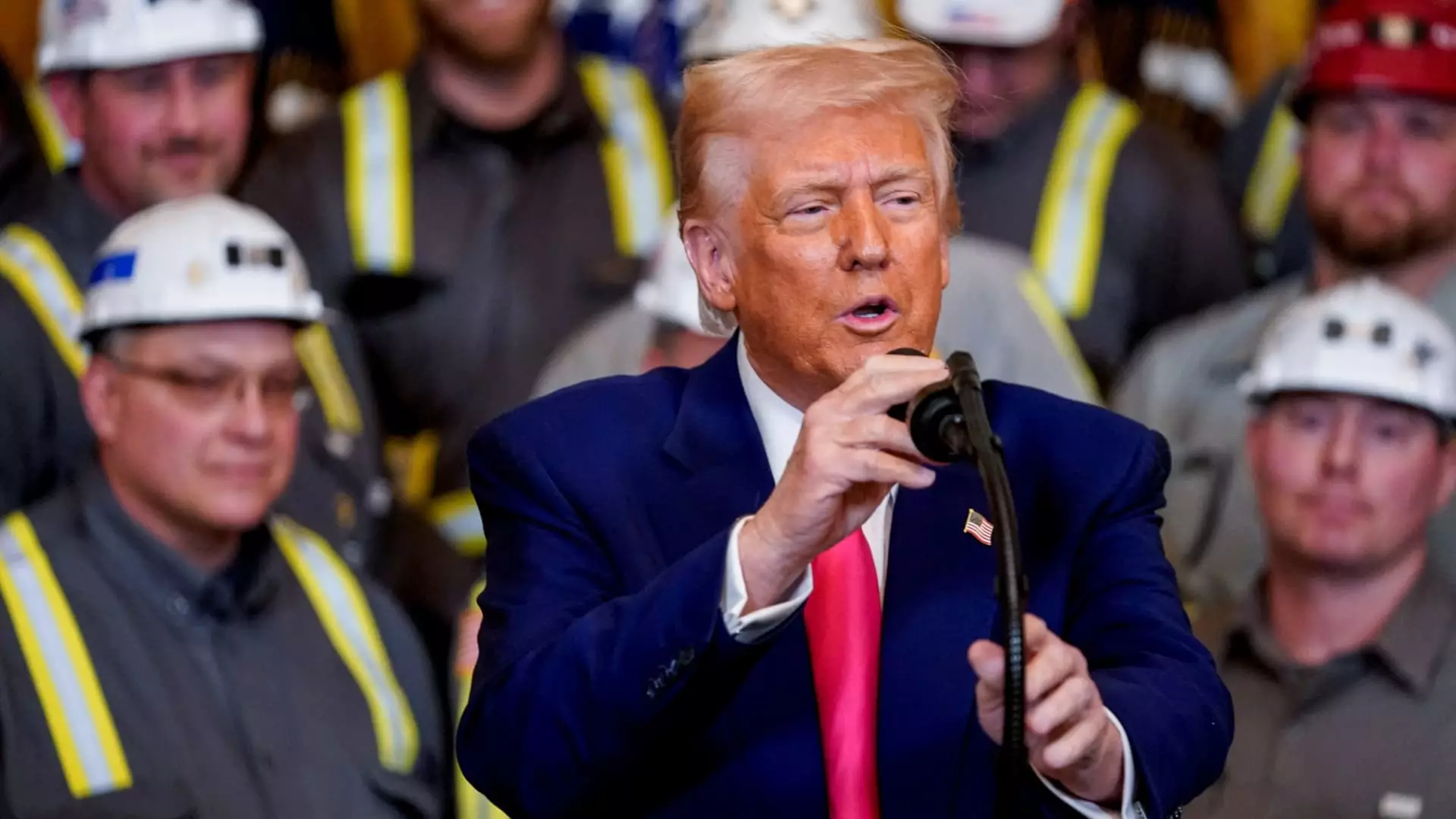President Donald Trump’s recent efforts to breathe life into the besieged coal industry could easily be construed as a political stunt rather than a sustainable solution to America’s evolving energy needs. His administration’s vision to utilize coal-fired plants to energize artificial intelligence (AI) data centers is rife with contradictions and political complexities. The premise is intriguing yet fundamentally flawed, as it juxtaposes the coal industry’s toxic past against a backdrop of rising environmental awareness brought forth by the tech sector’s commitment to sustainability. This push for a coal revival raises critical questions about our commitment to a greener future, and whether we are merely sidelining the problem for short-term gains.
A Clash of Interests
Trump’s April executive order aimed at finding existing coal-powered infrastructures to support burgeoning AI data facilities might resonate with coal miners searching for job security, but the broader implications are deeply concerning. Calling on tech companies to use “clean coal” as a backup power source begs the question: what does “clean” mean when coal is still one of the dirtiest energy sources? While it is true that the coal industry has been in freefall—accounting for just 16% of U.S. electricity generation in 2023, a steep decline from 51% in 2001—the solution cannot rest on extending the lifespan of an industry that has long thrived on environmental negligence.
With AI and big data’s voracious appetite for power, it’s no surprise that the demand for electricity is soaring. However, aligning this surge with an endorsement of coal under the guise of economic revival appears cynical. The tech giants, under pressure from a burgeoning eco-conscious consumer base, have courageously pivoted towards renewable resources and nuclear power. This diversity of sources cannot be trivialized; it is essential to mitigate the impacts of climate change, ensuring that future generations inherit a livable planet.
The Illusion of Energy Independence
In promoting coal, Trump’s administration seems to misunderstand the economic realities of the energy market. Peabody Energy CEO James Grech highlights a desperate call to “un-retire” coal facilities, igniting a debate over what it means to meet future energy needs. Considering the statistics that show coal plants are operating at merely 42% of their maximum capacity, this strategy feels more like clutching at straws than a well-thought-out energy policy. Instead of looking to the past, stakeholders should focus on innovation in the fields of renewable energy and energy storage.
The tech industry’s narrative is evolving; there’s acknowledgment that fossil fuels may temporarily fill the gaps left by the rapid closure of coal plants. However, leading companies like Amazon and Nvidia are leaning towards natural gas—a bridge fuel between coal and renewables—due to its significantly lower emissions. Even amidst the complexities, investments are being channeled away from coal in recognition of its declining viability.
Coal’s Dark Legacy vs. A Greener Future
There is an insensitivity in Trump’s approach to energy policy that is hard to overlook. While coal may indeed ease the immediate electricity demands of sprawling data centers, it fails to account for the extensive damage coal has inflicted—not just on the environment, but also on vulnerable communities reliant on healthy ecosystems. Forcing a revival of coal under the premise of meeting tech’s growing electricity demands neglects the need for a diversified and forward-thinking energy strategy that centers on sustainability, innovation, and responsible energy consumption.
The assertions made by executives from major tech firms, who remain noncommittal to coal-based energy, underline a growing apprehension about the practicality of this proposed energy mix. It’s naive to imagine that coal can coexist with commitments to reduce carbon footprints and adhere to net-zero goals. As Nat Sahlstrom aptly points out, coal is not seeking a future; rather, it’s a fading relic stubbornly fighting decline, a situation exacerbated by technological advances that continuously favor cleaner alternatives.
The Bigger Picture: A Call for Policy Re-evaluation
As the pressure mounts to address energy needs amid rising demand, it’s imperative that policymakers avoid falling back on flawed paradigms. The call for coal’s revival is not just about energy; it’s about fostering responsible governance that places the well-being of the planet and its inhabitants as a priority, rather than political gain. Economies centered around outdated energy models threaten to strangle innovation. Long-term solutions must prioritize investments in renewables and infrastructures that embrace a future unshackled from the burdens of fossil fuels.
If this administration is sincere about bridging the gap between traditional energy sources and future needs, it must focus on enabling a transformative energy landscape that champions clean alternatives. Otherwise, we risk being left with an unsettling reality where an obsolete industry becomes a political football, misguiding a nation poised to redefine its energy narrative. This is not just an energy challenge; it’s a moral imperative for environmental justice.

